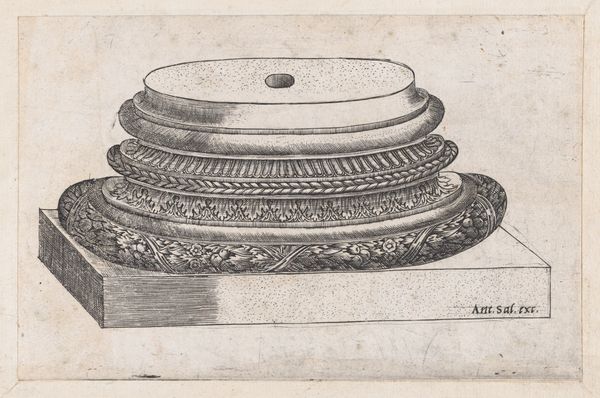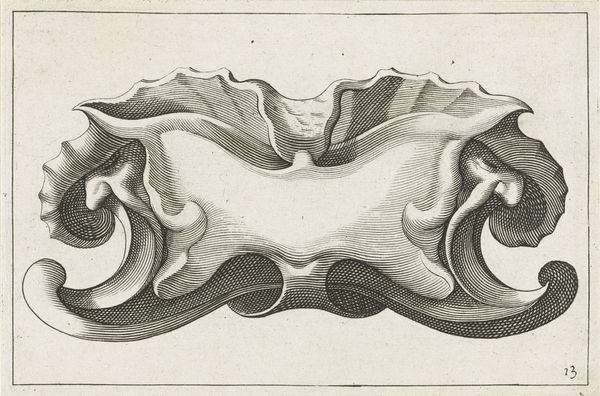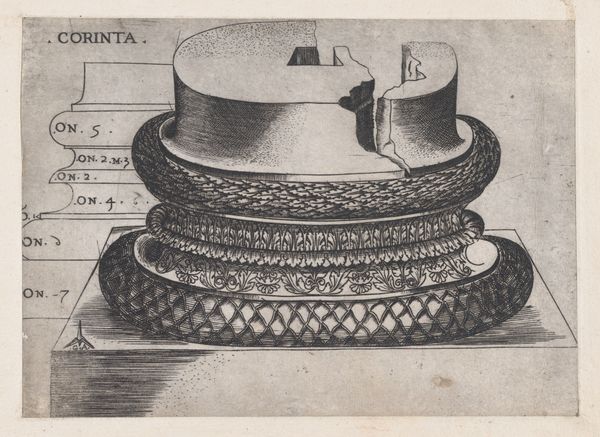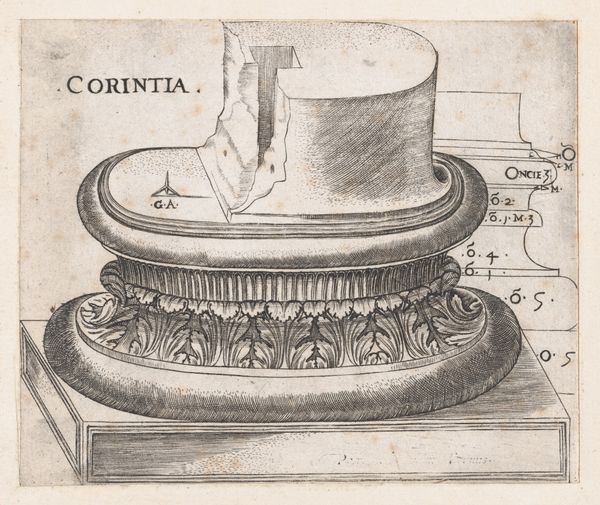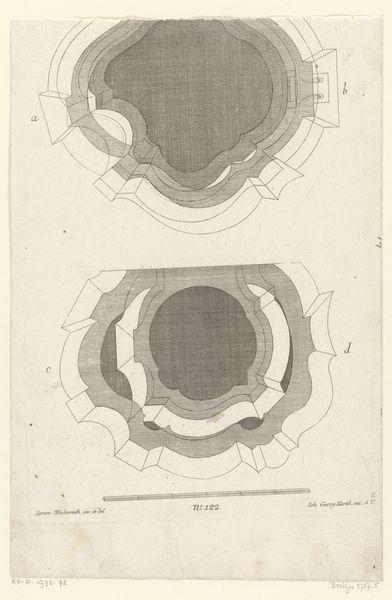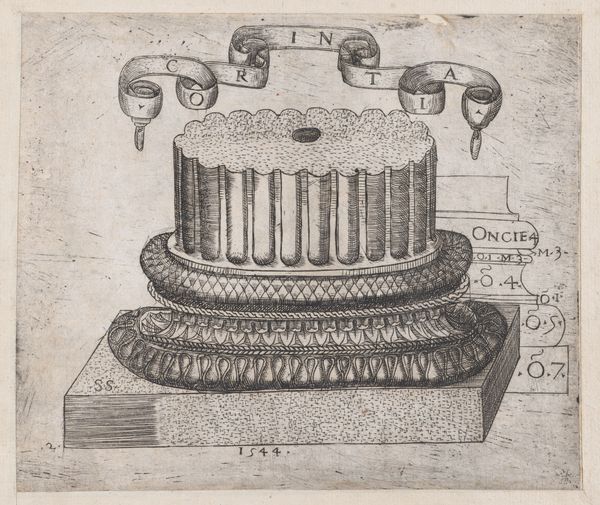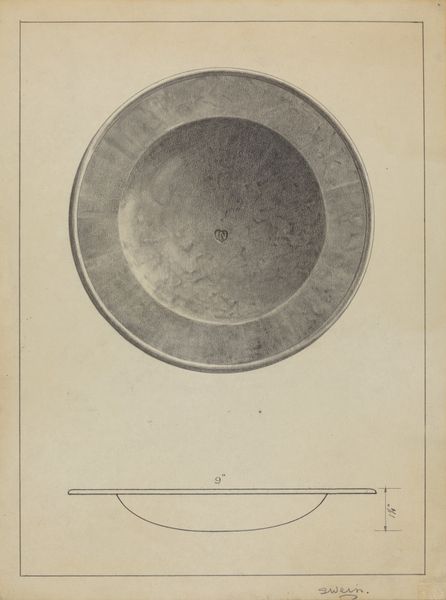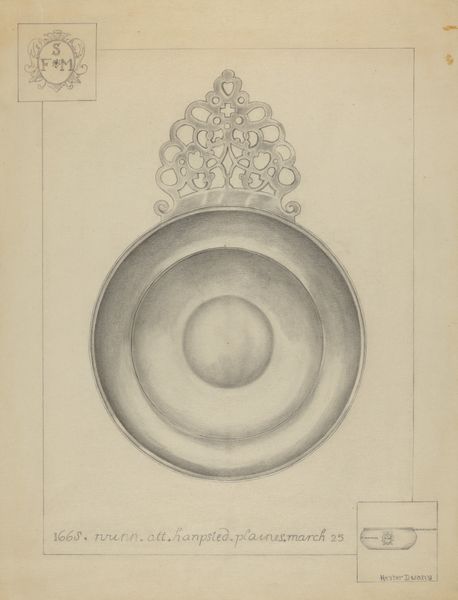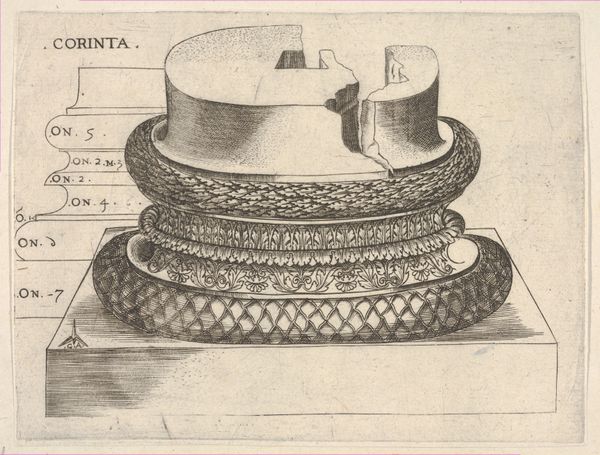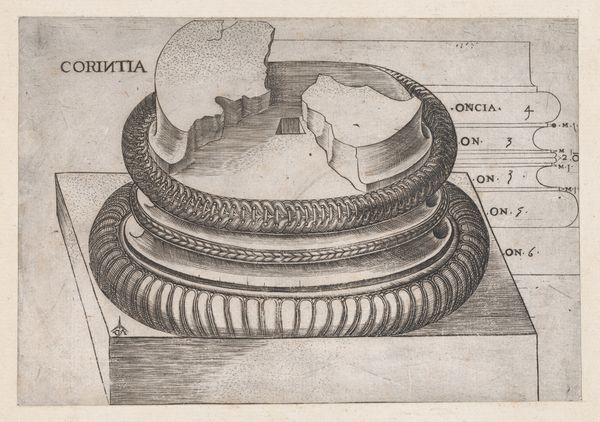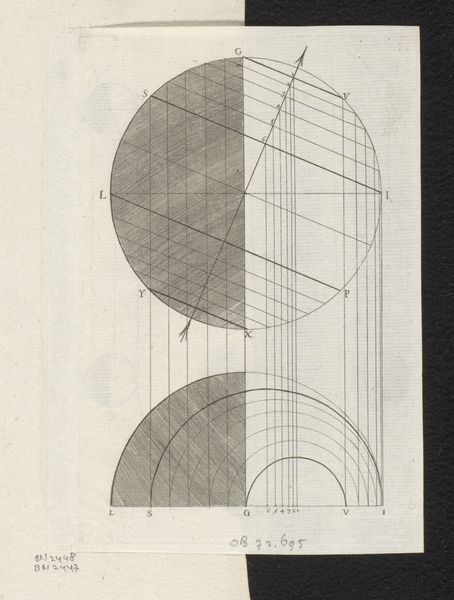
Speculum Romanae Magnificentiae: Ionic base 1534 - 1540
0:00
0:00
drawing, print, engraving, architecture
#
drawing
# print
#
11_renaissance
#
geometric
#
engraving
#
architecture
Dimensions: mount: 8 1/4 x 8 1/4 in. (21 x 21 cm) sheet: 5 1/8 x 7 1/16 in. (13 x 18 cm)
Copyright: Public Domain
Curator: Here we have a print titled Speculum Romanae Magnificentiae: Ionic base, created between 1534 and 1540 by Monogrammist G.A. & the Caltrop. This engraving, currently residing at the Metropolitan Museum of Art, presents a detailed architectural study. What are your first thoughts? Editor: My first thought is: wonderfully obsessive! All those tiny, intricate details. I mean, it's just a base, but look at how much love went into documenting every leaf, every curve. It feels both precise and wildly imaginative at the same time, like a botanist dreaming of temples. Curator: Indeed. The cross-hatching is particularly effective, providing a sense of depth and volume. Note how the geometric precision of the base contrasts with the organic forms of the foliage. Semiotically, the Ionic base symbolizes knowledge, and it is used here to provide accurate measurements. Editor: Measurements! Ah, that explains the annotations on the right edge there. Makes it less dreamy, more like a master builder’s notebook. I was so caught up in the visual, I nearly missed them. But now I wonder about the choice of plants and leaves. Did they carry any symbolic weight or are they just for show? Curator: While we cannot state the symbolism with certainty, we must appreciate that the plant representations do show close observation. This image stands not only as an architectural study but also as an artifact reflecting the meticulousness valued during the Renaissance. The artist presents a distillation of both the natural and the man-made, each dependent on formal considerations of shape, line, and, indeed, light. Editor: Yes! It's that meeting of the structural and the organic. Thinking about the artist, I'm curious. What kind of person obsesses over column bases? Did they spend days wandering among ruins, squinting at crumbling capitals? Curator: That speculation provides a bridge to interpreting its function in the context of the Renaissance interest in classical antiquity and reconstruction, and in considering it within its artistic context, one must also regard its structural significance within the evolution of architectural knowledge. The print exemplifies the spirit of investigation and documentation that defined the period. Editor: So, it’s not just a pretty picture; it’s a piece of history about how people in the Renaissance saw their past. Well, now I see more than just details—I see a story about obsession, rediscovery, and the very human desire to build something lasting. Thanks for pointing out those structural details; now, next time I see an Ionic column, I’ll have to pay it some respect.
Comments
No comments
Be the first to comment and join the conversation on the ultimate creative platform.
